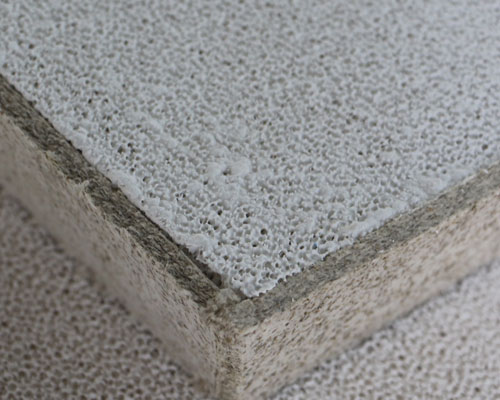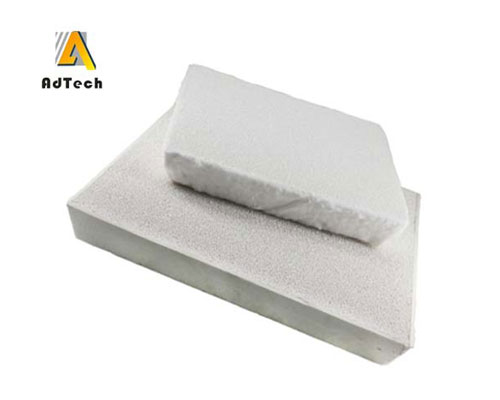Improve the filtration efficiency of CFF filter: one is to improve the interfacial tension between the melt and the substrate through surface coating and surface roughening treatment, to enhance the adsorption capacity of the filter to specific inclusions, and to reduce the initial pressure of the filter; the other is to increase the macropore size (PPI), by increasing the micropores of the matrix itself, a porous composite filter combining macropores-mesopores-micropores is produced.
For melts with mixed particles, in order to prevent large particles from accumulating the filter cake and blocking the pores prematurely, a pore gradient combined distribution filter can be developed. For example, the organic precursor immersion method and the Sol-Gel process can be combined to make the filter pore size. The distribution range can reach 0.02 ~ 3 mm, the strength can be increased by 2 to 3 times, and the inclusions below 5 μm can be filtered out. Another example is the unidirectional freezing of water-based ceramic slurry by freeze-drying method, and the sublimation of the ice under vacuum and low pressure conditions to form a porous bond, which is low cost and environmentally friendly. It can also add pore former method, fiber pore method, radiation-corrosion pore method, slurry in-situ curing foaming method, chemical vapor infiltration deposition method, organic foam pyrolysis to generate carbon skeleton coating slurry, etc. The combination of foam impregnation method prepares a high-performance filter with a combination of porosity, thereby improving filtration efficiency of CFF filter and filter activity.

CFF filter can not only remove physical inclusions through surface interception and adsorption, but also has the effect of solvent purification. In addition to the micropores on the matrix, it can act as a molecular sieve to remove intermetallic compounds. It can also pass through the additives in the matrix material. Reacts with the melt to remove harmful chemical inclusions dissolved in the melt, such as alkali metals, alkaline earth metals, and metal compounds.
Deepen the evaluation of the actual utility of CFF: it mainly includes the selection of the correspondence between the inclusion or alloy type and the filter, the effect of impurity removal, the evaluation of the combined effect of the filter and other purification methods, and the rapid and accurate detection of filtration efficiency. Its application basis is mainly to carry out the high-temperature performance evaluation of products, including physical and chemical properties under high-temperature conditions, filtration mechanisms, fluid dynamics models, database establishment, filtration media and aluminum melt surface energy, etc. Through the establishment of a comprehensive and effective evaluation Standards make the application of filters more selective and scientific.

